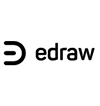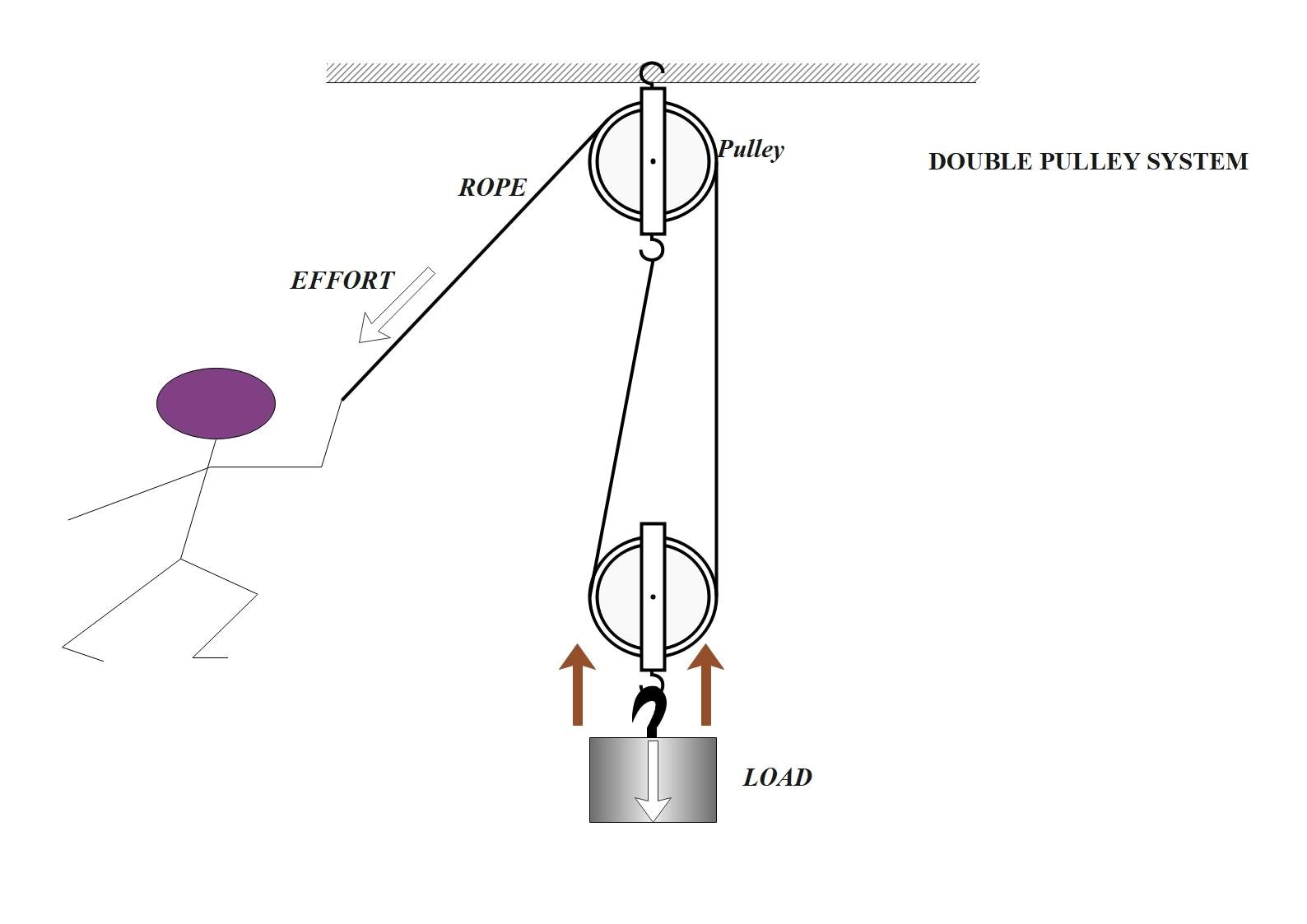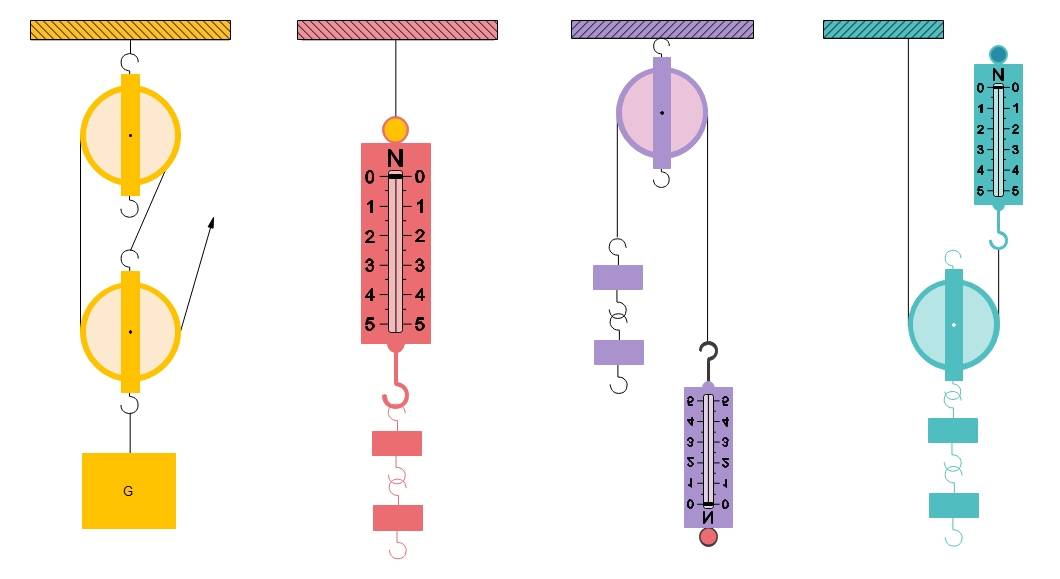You would've seen a chain block lowering and lifting loads in various settings - construction sites, manufacturing plants, and automotive companies. Ever wondered how it does that? The answer lies in block and tackle devices. The block and tackle is a mechanical system that uses an arrangement of wheels, ropes, and pulleys to carry and move heavy objects.
Here is a complete rundown of block and tackle setup, its working principles, and examples. By the end, you will find a quick tutorial on how to make this diagram on the canvas.
In this article
What is a Block and Tackle?
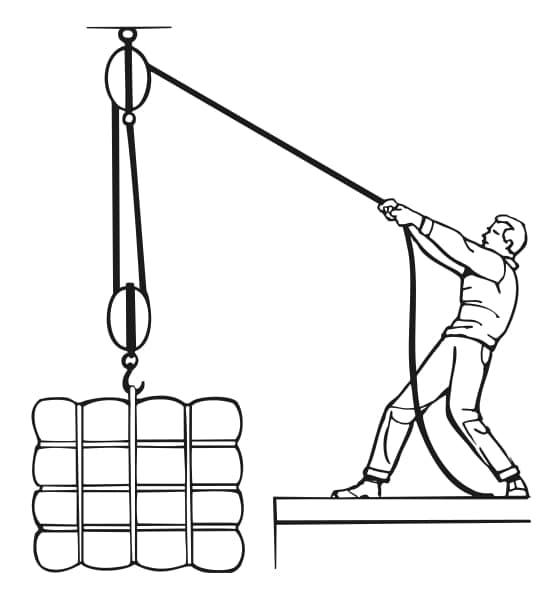
Source: EdrawMax
A block and tackle refers to a system with two or more pulleys hung through a rope, chain, or cable. This combination is commonly used to lift heavy weights and put massive pressure in a direction. A standard block and tackle setup consists of a chain wound around two wheels. When the operator pulls the chain, it wraps around the wheels and lifts a heavy load. Chainblock is a typical example of block and tackle.
How Does a Block and Tackle Work?
A block and tackle system works on the mechanical advantage principle. As per this, when the input force is multiplied using blocks or pulleys, it creates a larger output force. This force can then lift a heavy load easily. Let's dig deeper into individual elements to understand them better.
Pulley Arrangement
A standard block and tackle has two pulleys, one movable and the other fixed. The movable pulley is hung to the load and moves with it. In contrast, the fixed pulley does not move and is restricted to a point.
So, how do we differentiate block and tackle systems from one another? For this, you need to count the wheels and the ropes threaded through them in each pulley. Each extra rope in the setup reduces the force required to move the weight.
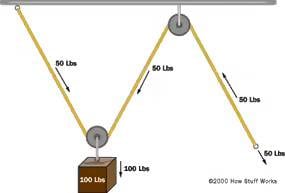
Source: How Stuff Works
Rigging
You can either rig the block and tackle to advantage or disadvantage. For instance, rope pulled in the same direction will lift the load, giving you an advantage. Similarly, you will rig it to disadvantage by pulling the rope in the opposite direction.
Can You Add As Many Pulleys As You Want?
Generally, theory believes that one pulley gives you one mechanical advantage. So, you can hang a desired amount of pulleys in a block and tackle design following the process discussed above. This would mean you need a smaller input force to lift an object.
However, this is not exactly how it is done practically due to friction. While adding a pulley, you must consider the effects of friction on the system. As you add more pulleys, the friction produced by the rope against the wheels increases, diminishing the advantage.
Modern pulley systems can eliminate this friction significantly, but not entirely.
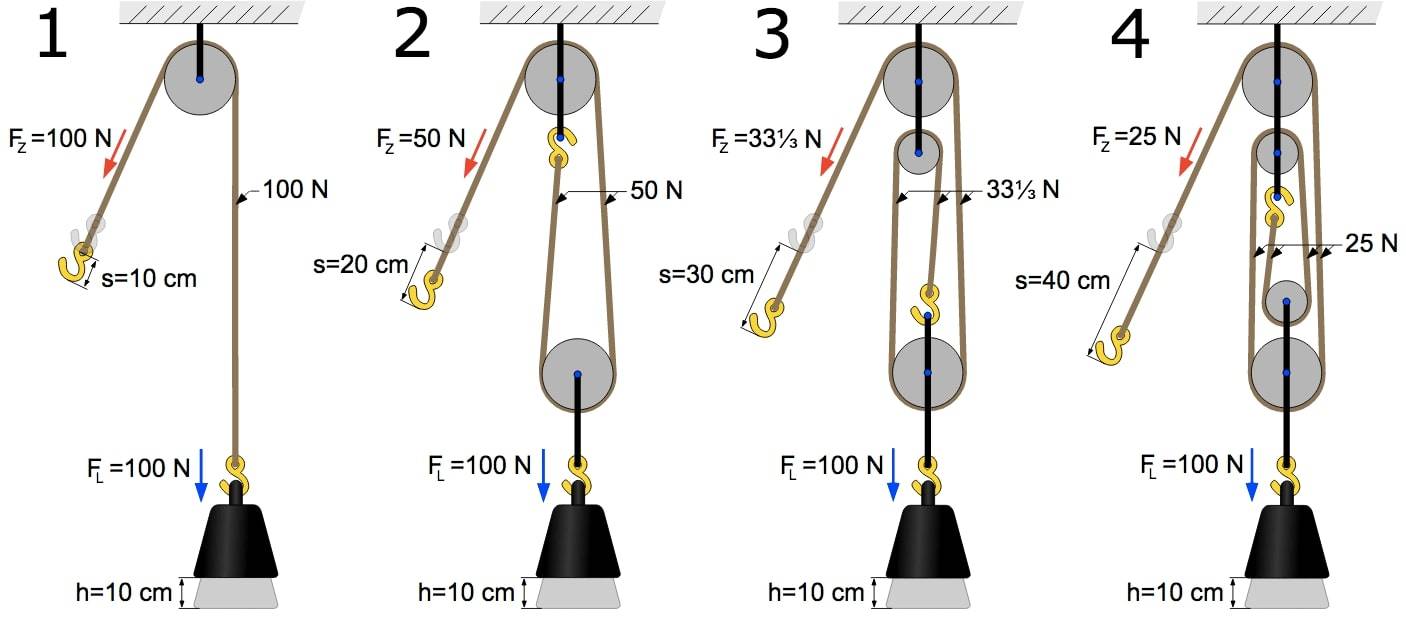
Source: EdrawMax
Common Applications of a Block and Tackle System
Block and tackle systems are commonly used in construction spaces. Civil engineers use this setup to ease the process of lifting heavy loads. You must have seen the big construction lifts on building sites. Moreover, you will also find these mechanical systems used in garages and assembly lines to lift engines from vehicles and other heavy objects.
Pros and Cons of a Block and Tackle System
Block and tackle rigging setups are used widely in construction, shipping, emergency, and manufacturing. Let's understand the advantages and disadvantages of employing such a system.
How to Draw a Two-Pulley Block and Tackle Rigging Diagram?
Plotting a block and tackle rigging diagram on canvas demands a clear understanding and advanced canvas. Thankfully, EdrawMax's mechanics symbols, data labels, and dimension scale help you with this.
Let's make a standard two-pulley mechanical diagram using this software.
Step 1 Open the Editing Panel
- Download and install EdrawMax desktop version or try its online version.
- Log into your Wondershare account.
- Visit the Home button from the dashboard and click More > Science and Education.
- Select Mechanics from the menu and choose your desired template. Let's open a blank mechanics canvas for this tutorial.
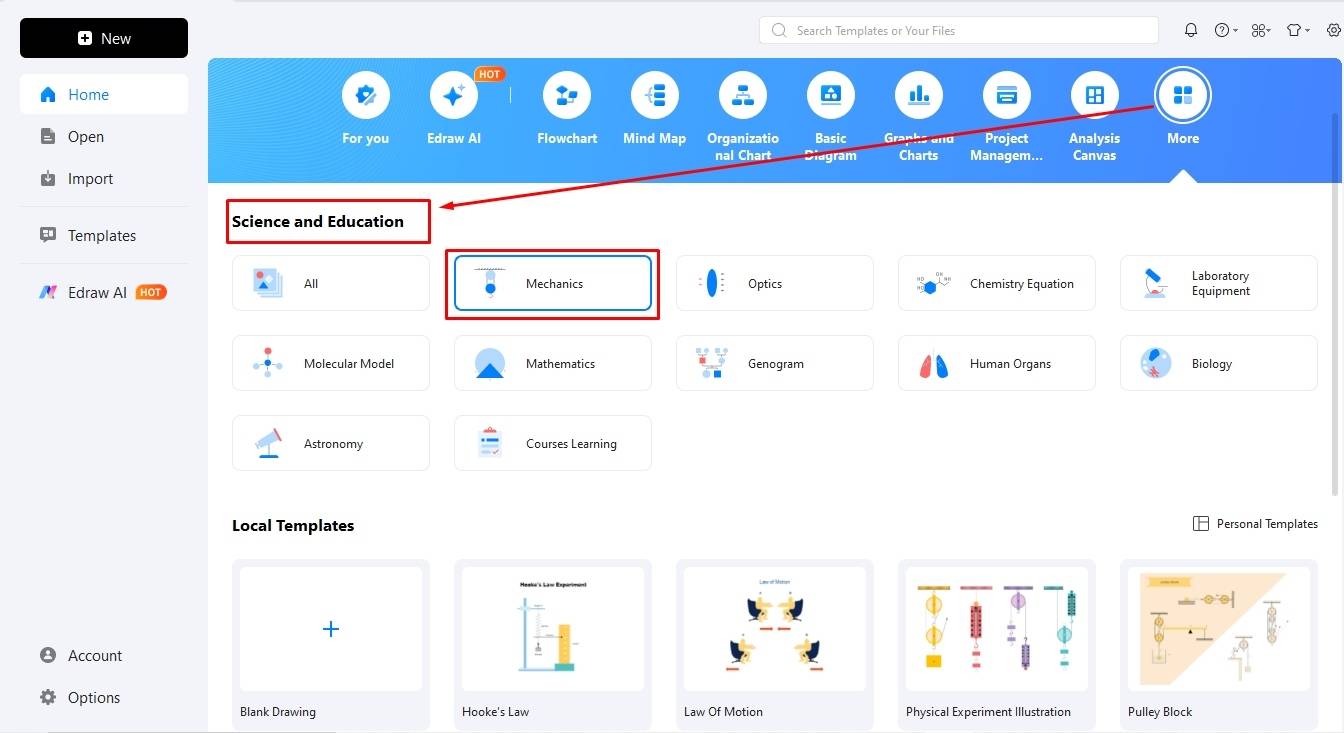
Step 2 Plot the Block and Tackle Elements
Once on the editing panel, proceed to plotting the block and tackle structure.
- Start by accessing the symbol library from the left side.
- Drag your desired mechanics symbol onto the canvas.
- Start with the blocks (two rectangles). Place them in between the pulley (represented by wheels). Pass the rope shape through this pulley to complete the structure.
- You can change the color, style, and thickness of each symbol on the canvas.
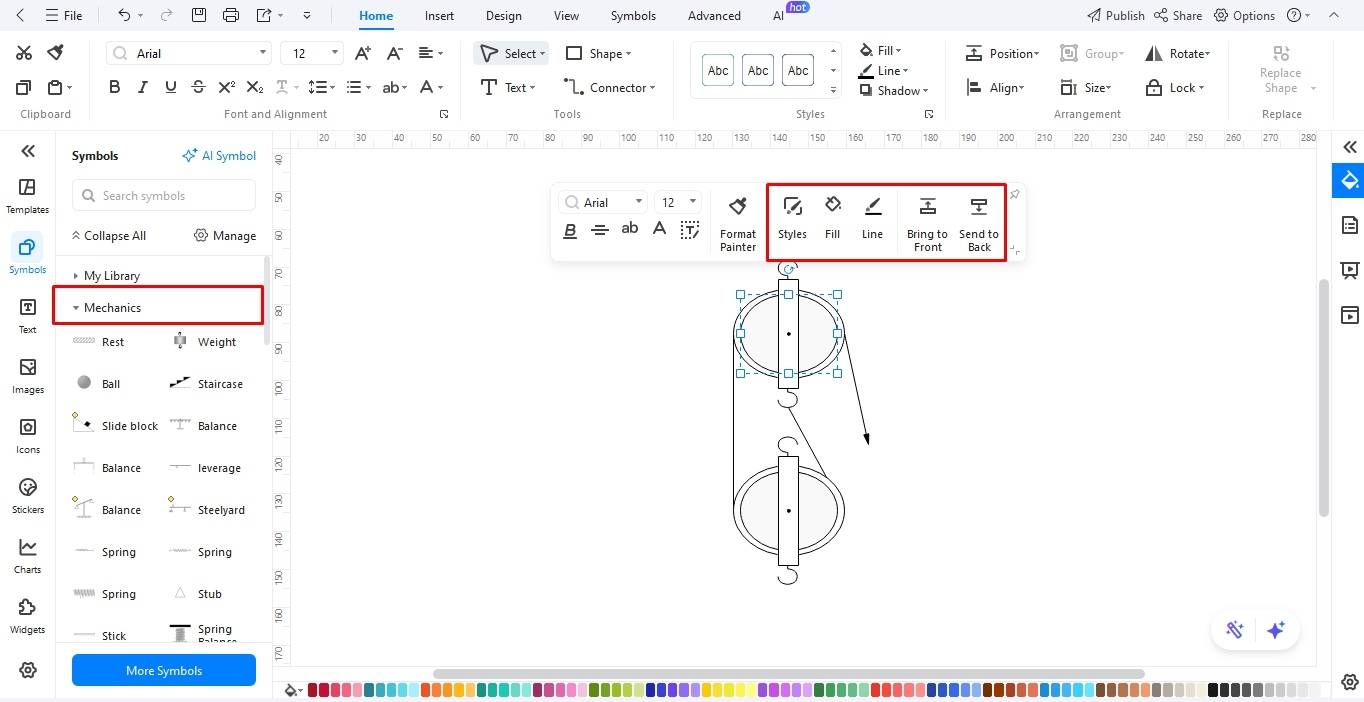
Step 3 Label the Diagram
The next step is labelling the diagram.
- Double-click anywhere on the canvas and start typing.
- Change the font style, size, and more from the on-screen menu. You can also change the path of the text to match the diagram flow.
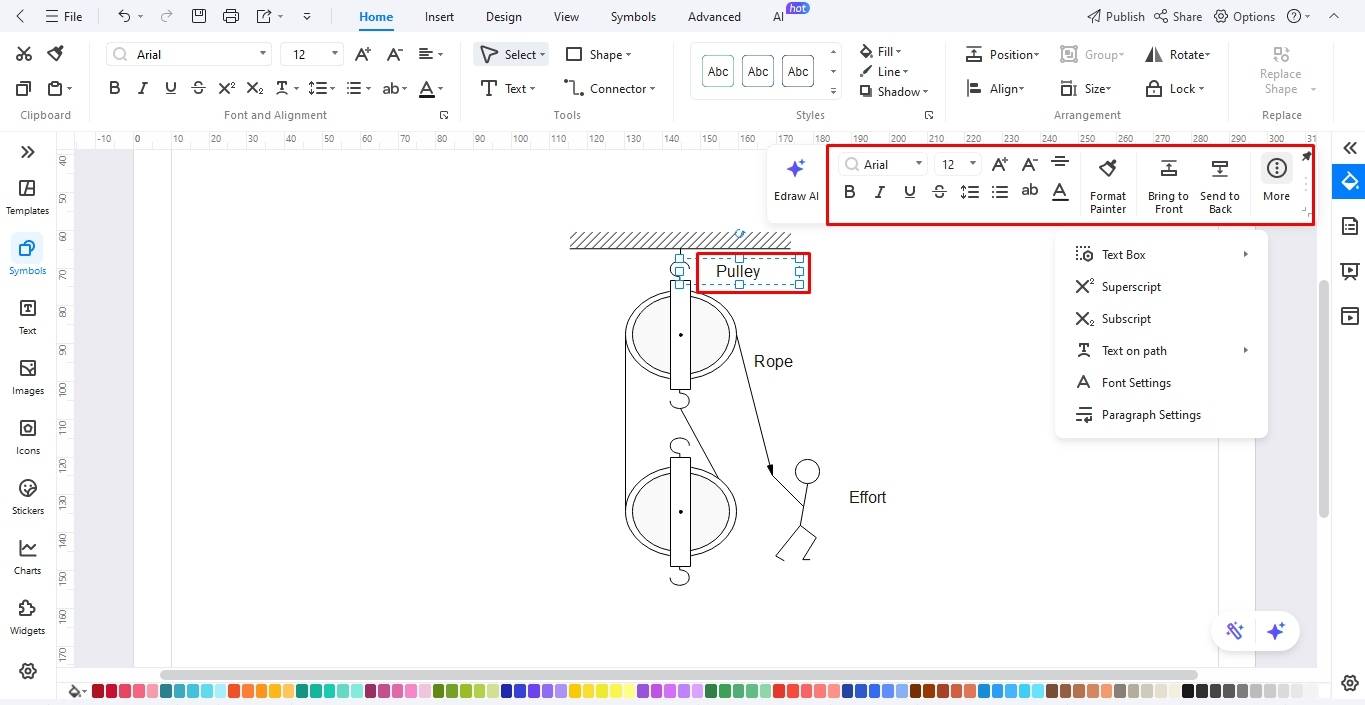
Step 4 Download and Save!
Finally, once you are satisfied with the diagram, it's time to download it.
- Visit the File menu from the top-left corner.
- Choose your desired download format (Graphics - PNG, JPG, JPEG, MS Office - Visio, PPT, Word, Excel, and PDF).
- You can also save it in an EDDX format for further revisions.
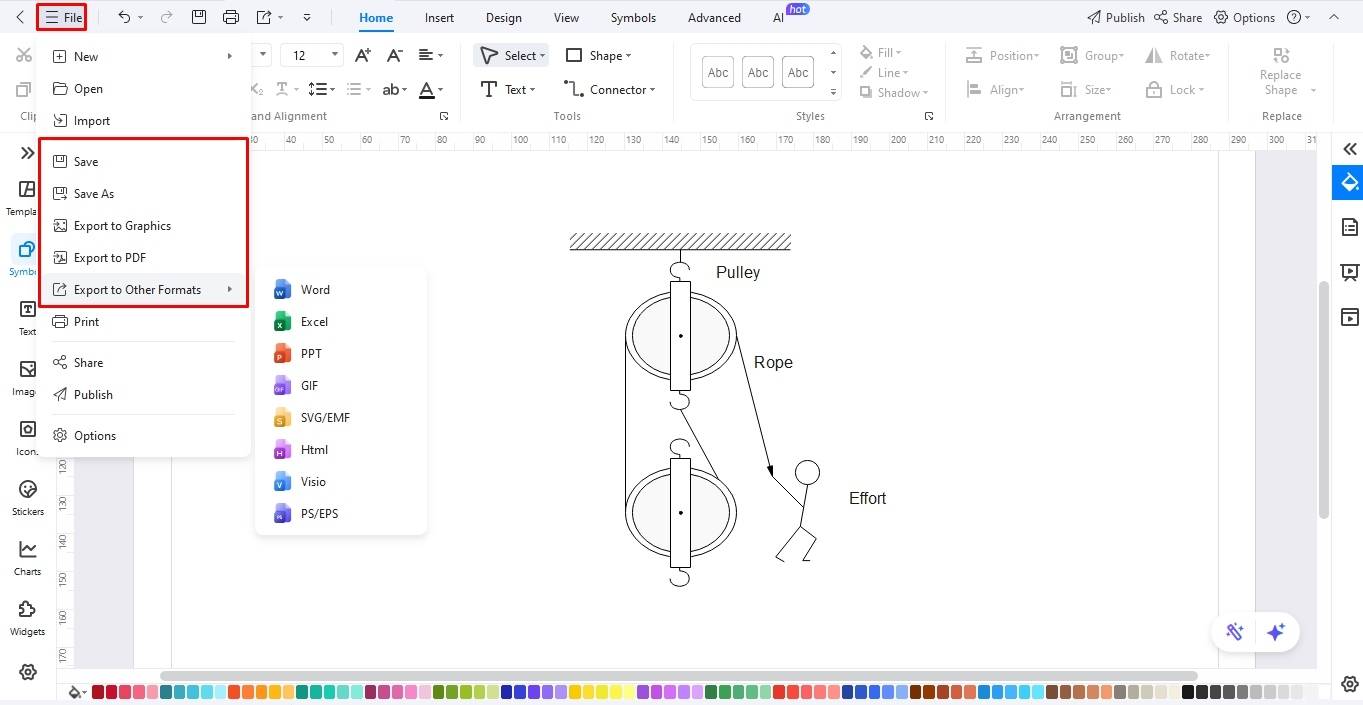
Block and Tackle Diagram Examples
Now that we have a fair understanding of block and tackle setups, let's visualize them on the canvas with examples. Head over to the EdrawMax template community to find similar pulley arrangement templates.
Block and Tackle Diagram with Two Pulleys
Here is a traditional depiction of how the pulleys linked with a rope reduce the input effort, giving the operator a mechanical advantage. The load shown by the rectangle gets attracted to an upward force by the pulleys. Hence, the person putting effort finds it easy to lift the load with minimal effort.
Block and Tackle with Different Pulley Arrangement
The figure illustrates a block and tackle system with different pulley arrangements, depending on the purpose. The first setup, represented by yellow, is a classic depiction of two-pulley mechanical advantage where input force is reduced to lift the object.
Moreover, the second and fourth systems show the use of spring balances. This arrangement helps the operator determine how much force is required to fulfil the mechanical advantage and reduce the input force.
Final Thoughts
There you have it, all about the block and tackle systems. Plotting different variations of this mechanical setup can better help you understand the concept and apply it. For this, head over to EdrawMax. Its ample canvas space, vector symbols, and editable templates significantly simplify the process. So, give it a try.
